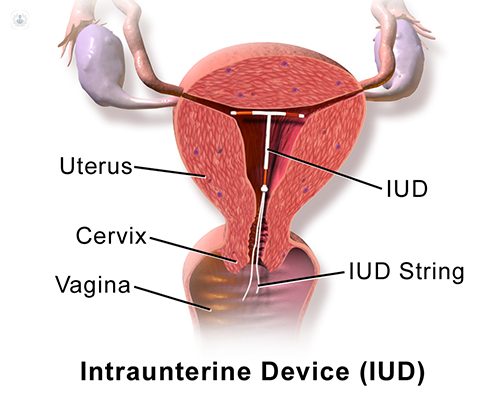FAQ IUD
Written by:There are many different types of IUDs, but basically grouped into two main groups:
- Inert, which today are not used.
- Medicalized, among which include the copper and hormonal. These have a much higher success rate (rate virtually unwanted pregnancies is 0), and therefore are the most commonly used. The difference between copper IUDs and hormonal IUD is the material that are coated and that interacts with the uterus of the patient to produce their effects (the first type and the second copper hormone levonorgestrel). Another difference, also significant, is the hormonal IUD has to make the endometrium (the innermost layer of the uterus) atrophy, ie, more narrow, thereby reducing menstrual bleeding.
Indications for IUD
The IUD is indicated in any patient who wants a contraceptive method.
Currently, all scientific societies and gynecologists are committed by so -called LARC (reversible contraceptive long - term), such as IUDs, because the effectiveness of contraception depends on how well they use it patients, ie the adherence to treatment; gynecologist puts the IUD and we know that for 3-5 years the user will be well protected against unwanted pregnancy. However, with the condom or the pill is possible contraceptive failure, for example if the patient forgets to use it at some point.
Yore was said that teenage girls or women without children were not candidates for IUD use by having a smaller uterus or cervix closer to hinder the introduction of the IUD. Today there is a general consensus that any woman is subsidiary to use an IUD as long as she wishes. There is no age limit, parity (previous births) .... and just have medical contraindications.

IUDs, do you have side effects on the body?
Its action is eminently local. Levonosgestrel the IUD is a small proportion of hormone into the bloodstream, but it is so insignificant that it does not produce any hormonal alteration. With both types of IUDs ovulation and ovarian cycle remain normal.
Women with strong rule, can use IUD?
They are ideal candidates. SEGO (Spanish Society of Gynecology and Obstetrics) considers the hormonal IUD as the first treatment option in women with heavy menstrual bleeding. Therefore, if we have a woman with plenty of rule you want we can offer you other contraceptive methods if she wishes, but our first proposal will always be the hormonal IUD.
Advantages of the IUD
Very briefly, the IUD provides:
- Very high efficiency
- Comfort for the user, which leads to greater adhesion (greater continuity method)
- Insouciance of contraception at the time of intercourse
- Security (as few side effects or contraindications)
- Cost (although the initial outlay may seem high, if we think spending on contraceptives over the 5 years of using an IUD, comes cheaper than other methods)
IUD risks
IUDs as such have no significant risk, except in cases where a complication occurs during insertion (very rare and I do not know if it's worth or speak). For its part, the copper can sometimes produce something greater than normal bleeding during menstruation.
What I think it is important to note that still be a great contraceptive methods do not protect against sexually transmitted infections; if not stable couples, casual encounters, relationships risk ... should associate the condom.



